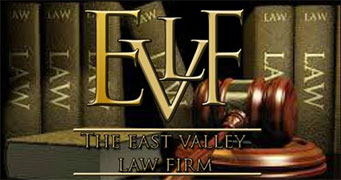All posts by d3ry14u
Does a Real Estate Agent Owe a Duty to Disclose to the Other Party in the Transaction?
In Arizona, a licensed real estate agent owes fiduciary duties to the party the agent represents. But what about the other party in the transaction? Arizona Administrative Code R4-28-1101(A) requires that real estate agents “deal fairly” with all parties in the transaction. Real estate agent must disclose to the other party material information about the transaction that their client is required by law to disclose even if the client does not disclose. Lombardo v. Ablu, 199 Ariz. 97, 14 P.3d 288 (2000). Thus, a real estate agent has a duty to disclose material defects in the property or transaction itself if the agent’s client has a duty to disclose. Material information could include the buyer’s financial ability to close the sale, the seller’s ability to convey title as well as knowledge of the physical condition of the property. If an agent violates the duty to deal fairly with the other party in the transaction, that party may have a negligent or intentional misrepresentation claim against that agent and the agent’s broker.
Boundary Line Disputes, Boundary Line Acquiescence and Adverse Possession
BOUNDARY LINE ACQUIESCENCE
ADVERSE POSSESSION
Both theories have similar elements of proof and if the claims are proven, the title to the possessed property is transferred to the possessor. Depending on the facts of the case, one or both of the theories may be appropriate to assert in a quiet title lawsuit.
The Arizona Court of Appeals Limits Application of Arizona’s Anti-Deficiency Statute.
If trust property of two and one-half acres or less which is limited to and utilized for either a single one-family or a single two-family dwelling is sold pursuant to the trustee’s power of sale, no action may be maintained to recover any difference between the amount obtained by the sale and the amount of the indebtedness and any interest, costs and expenses.
Most residential properties meet the definition of A.R.S. § 33-814(G) but does the statute apply to builders, properties under construction or vacant land on which the owner intended to build and occupy the home?
The Arizona Supreme Court held the anti-deficiency statute does not apply commercial developers building homes that would otherwise qualify under A.R.S. § 33-814(G). Mid Kansas Federal Sav. and Loan v. Dynamic Development Corp., 167 Ariz. 122, 804 P.2d 1310 (Ariz. 1991).
In M&I Marshall & Ilsley Bank v. Mueller, 228 Ariz. 478, 268 P.3d 1135 (App. 2011), the Arizona Court of Appeals extended A.R.S. § 33-814(G) to include residential property under construction if the owner intended to occupy the home after construction.
In BMO Harris Bank N.A. v. Wildwood Creek Ranch, LLC, CA-CV 12-0728 (decided January 16, 2014) the Arizona Court of Appeals refused to extend A.R.S. § 33-814(G) to vacant land upon which the owners intended to build and occupy a home. The Court of Appeals found the fact that no development of the property had occurred to be a significant factor in deciding Wildwood Creek Ranch. No guidance was provided as to amount of development required to trigger A.R.S. § 33-814(G) protection or whether a party could start construction on a property solely for the purpose of avoiding a deficiency judgment.
The Trouble with Form Contracts
A good contract avoids ambiguous and conflicting terms and clearly states the parties’ obligations and remedies in the event of a breach. I often find that clients do not fully understand the contractual options that are available and can be written into the contract. Past clients were surprised to find out a form contract limited their damages under the contract, waived a jury trial, agreed to arbitration or waived their right to recover attorneys’ fees in the event of a dispute.
While form contracts can save some money upfront, they can cost you dearly in the end.
January 13th, 2014
Defect Disclosure Obligations IN As-Is Real Estate Transactions
The seller of real property in Arizona is must disclose latent defects in the property that are known to the seller, notwithstanding the existence of a burden-shifting as is clause or disclaimer of warranties in the agreement. S Dev. Co. v. Pima Capital Mgmt. Co., 201 Ariz. 10, 31 P.3d 123 (App., 2001). A latent defect is defined as a hidden or concealed defect which could not be discovered by a reasonable inspection. Id. Examples of latent defects include foundation problems as well as plumbing and electrical issues. The decision in S. Development, was based upon the duty of good faith and fair dealing implied in all contracts. Id. If a seller knows of a material issue that is unknown to the buyer, the seller must disclose issue.
The failure to disclose a latent defect could result in seller’s liability on a theory of negligent disclosure. There is also potential liability for undisclosed repairs as fraudulent concealment if the repairs are not completed properly or are a symptom of a larger defect.
Sellers must understand that the as-is clause only limits liability for undisclosed defects – it does not eliminate liability.
Arizona Court of Appeals Limits Subcontractor Liability.
Workmanship and Habitability. The homeowners argued that the Implied Warranty arises from the construction of the home and should extend to subcontractors because the actual construction is
performed by the subcontractors rather than the general contractor. The Court of Appeals disagreed, finding that the exceptions to the general privity requirement did not extend to subcontractors.
While this is good news for subcontractors, a subcontractor could still be liable for defective workmanship as a result of an indemnity claim brought by the builder/developer. The homeowner may also have a negligence claim against the subcontractor.
